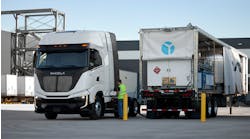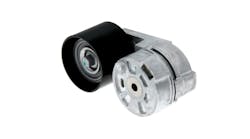Most fleets are familiar with the laundry list of good reasons to replace engines in their fleets. The rule of thumb is that replacing an engine can effectively double the lifespan of a vehicle at a fraction of the cost of a new vehicle.
Newer engines typically bring along many of the benefits of a new vehicle, like improved fuel economy, reduced emissions, enhanced performance, greater durability and new warranty coverage for the most expensive part of the vehicle. Some of the biggest benefits of engine replacement are the things fleets don’t have to deal with, like licensing fees, taxes and sky-high new vehicle insurance policies.
Plus, come tax time, engine replacements can be depreciated in the same year, while new vehicles have a four- to seven-year depreciation cycle.
So, it’s no wonder that many fleet managers are using an engine replacement program to help their bottom line. But, there’s one pitfall not to drop into.
A COSTLY OMISSION
All too often, when it comes to the inventory of things fleets are planning for during an engine replacement program, heat management doesn’t even make the list. This omission can lead to expensive, inconvenient and completely avoidable surprises.
New engines are subject to the same emissions regulations as new vehicles, and stricter emissions regulations nearly always result in increased operating temperatures. That means when you retrofit a new engine into an older vehicle, it’s likely that you’re going to need to manage higher overall temperatures.
Dealing with more heat isn’t a problem – when you plan for it. There are companies – like Thermal Structures – that are experts at creating high-performance thermal insulation for applications like heavy duty diesel engine replacements. With proper thermal insulation, heat is kept where it belongs: away from where it can do damage.
When you include the need for thermal insulation early in engine replacement project planning, it will typically represent a very small portion of the overall project cost and be easy to install as part of the engine retrofit. Some thermal issues can require on-engine insulation, but most can be resolved easily with simple heat shields.
UNPLEASANT SURPRISES
If you wait until much later in the project, or if you don’t plan for thermal insulation at all, you can be in for an unpleasant surprise. The newly retrofitted vehicles could be damaged by heat. But even if the issue is caught before the damage occurs, challenges could still present themselves.
There are a couple added sources of cost and headaches in these situations. First, the vehicle will have to be removed from service again and the recently upgraded engine and exhaust may have to be removed to install proper thermal insulation.
Second, because the retrofit may not have left much room for thermal insulation, more costly, thinner high-performance thermal insulation may be necessary, and the installation process for this tends to be much more difficult.
In the end, poor planning can significantly add to the cost of the project.
To avoid these headaches, involve a thermal insulation partner in the planning process. The earlier, the better.
Planning early for the heat protection needs of an engine retrofit will make sure your bottom-line savings don’t go up in smoke.
Bruce Kaplan is the product development manager for Thermal Structures (www.thermalstructures.com). A supplier of insulation and composite structures, the company specializes in custom fabricated insulation blankets, heat shields, fire shields, composite structures and metallic and silicone seals. Its insulation products are used in aerospace and industrial applications to protect engines, ducting, valves, mechanical equipment, sensors, electronics and wire harnesses.



